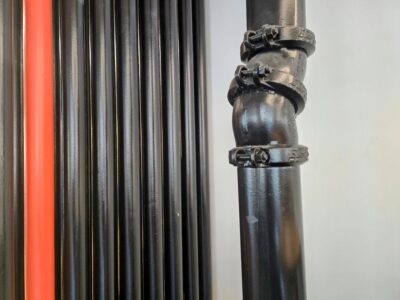When Bank of America bought out MBNA in 2005, it was on top of the world, a leader in credit card banking that swooped into Wilmington after the sheen of the late ’90s MBNA takeover had worn off. MBNA had transformed the city, for better or for worse, with multimillion-dollar renovations and postmodern constructions, including its trophy showpiece, Bracebridge, its four-building headquarters in the heart of downtown.
Bracebridge IV, which was donated to the Longwood Foundation in 2012, is now the Community Education Building (CEB), home of Kuumba Academy and Greater Oaks Charter School. Bracebridge II is still BofA (for now), but Bracebridge I — the one that looms over the old City-County Building, facing Rodney Square — and III have been up for sale for some time. There are rumors of buyers from the western U.S., but the future of the two buildings are not known.
The future of Bank of America and its subsidiaries in Wilmington, including Merrill Lynch and US Trust, is a little less hazy, and it’s pointing to the suburbs, in the increasingly hot area near where Centerville Road meets Lancaster Pike, down the road from CSC.
It doesn’t seem like relocating a Merrill Lynch and a US Trust to the suburbs would cause a great loss for the city, but for the fact that the jobs that are relocating are high-paying jobs, to the point where moving those jobs out of the Wilmington could cost the city a lot in lost taxes.
Wills Elliman, a Wilmington real estate broker and managing director at Newmark Knight Frank, explains: “There’s the head tax per employee of $10 each, so $120 per year per employee.”
That doesn’t sound catastrophic, but remember these are very high paying jobs. “On top of that, the city will lose the 1.2 percent wage tax on the salary each employee that leaves the city,” said Elliman. Which, with each employee averaging around $100,000 per year, could really make a dent.
This is nothing new for Wilmington. MBNA carved out a whole culture downtown (one that is not particularly missed — ’90s corporate culture didn’t exactly blend in with the community), and it was gone in less than a decade. ING brought a whole different culture to the Riverfront area, then it was gone. Bank of America has given quite a bit to Wilmington — just a few months ago, it selected Wilmington Renaissance to receive $200,000 in funding through its Neighborhood Builders program — but the city could still suffer if it loses those taxes.
Let’s hope that whoever buys I and III will bring in a lot of good, stable jobs.
Join the conversation!
Find news, events, jobs and people who share your interests on Technical.ly's open community Slack

Delaware daily roundup: Delmarva Power vendor stats; DelDOT's $15M federal grant; 50 best companies to work for

Delaware daily roundup: Over 4,000 Black-owned businesses uncovered; Dover makes rising cities list; a push for online sports betting

Delaware daily roundup: Ladybug Fest illuminates small biz; Hahnemann Hospital's biotech future; intl. politics and a Middletown project


